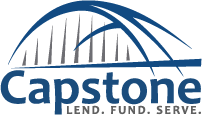How to Get a Hard Money Loan: 5 Requirements
Hard money loans are quick, flexible loans available to real estate developers, builders, and house flippers through private lenders instead of banks. They are called “hard money” loans because they are backed by “hard” assets like real estate. Hard money lenders can create their own qualification requirements for borrowers since they are not subject to most banking regulations.
Read more: How Does a Hard Money Loan Work?
While the details may vary from lender to lender, most hard money lenders will look for certain specific qualifications before approving a borrower’s application. The following are five common requirements for hard money loans.
1. Down payment
A hard money loan amount is often based on the property’s anticipated value once the borrower’s project is complete. In situations involving a real estate development or improvement project, the value of the property at the time of purchase — known as the “as-is value” — might not be enough to cover the lender’s losses if the borrower were to default before completing the project.
For example, if the lender loans $500,000 on a property currently valued at $400,000, and the borrower defaults, the lender would have $100,000 or more in losses.
Photo by Nataliya Vaitkevich from Pexels
Lenders want borrowers to have some “skin in the game” by putting in their own money. This protects the lender by encouraging borrowers to remain committed to finishing the project.
Hard money lenders almost always require a down payment. The amount of the down payment may depend on factors like the type of property and the borrower’s project history with the lender. A hard money lender’s minimum required down payment may be higher than a traditional lender’s because they’re willing to take on more risk.
2. Liquid reserves
“Liquidity” refers to the ability to convert an asset into cash quickly, without losing any of its market value.
Money held in a bank account is a highly liquid asset because the account holder can readily withdraw or transfer it. Stocks and other securities are less liquid because converting them to cash often involves fees paid to brokers. Stocks valued at $10,000 will convert into less than $10,000 in cash. Real estate is not considered a liquid asset, because selling it takes time and costs money.
Photo by ClaudiaWollesen from Pixabay
“Liquid reserves” refers to the amount of cash, cash equivalents, and other “liquid” assets that are available to a borrower. Hard money lenders want to see that a borrower has sufficient liquid reserves available to manage the project and to make payments on the loan. The more liquid reserves a borrower has, the more confident the lender is likely to be.
3. After-repair value
“After-repair value,” or “ARV” is an estimate of a property’s market value once the borrower has completed renovations or improvements. It’s most common in projects involving house flippers and rehabbers in which the goal is to sell the property once the work is complete. ARV is calculated by looking at recent prices of comparable properties (commonly called “comps”) based on factors like:
Location
Age
Size, in terms of both acreage of the lot and square footage of the structure
Style of construction
Condition: need for repairs, livability, upgrades, etc.
Hard money lenders compare a property’s ARV to its as-is value when evaluating a borrower’s application. The greater the difference between the two, the better the loan is going to look to the lender. ARV is often also a factor in the amount of the loan, setting an upper limit on what many hard money lenders are willing to lend.
Read more: How to Calculate ARV
4. Loan limits
Different hard money lenders will set their own limits on how much they are willing to lend. Some lenders set a minimum amount for loans. Nearly all of them set a maximum.
Many lenders set the maximum amount that they will lend at 70% of ARV. If a lender determines that a property has an ARV of $1 million, they will lend up to $700,000 on that project. This amount will need to be enough for the borrower to complete their project.
5. Investment history
A history of successful real estate projects is not usually a cut-and-clear requirement for a hard money loan. But it can boost your chances of both getting approved and getting better terms on a loan.
If this is your very first fix-and-flip project for example, you can still qualify for a hard money loan - but it would be smart to lay out a well-thought-out plan for the project’s completion.The lender might want to know everything that you plan to do from the moment you close on the loan to when you sell the property. By getting a few smaller projects under your belt, you can develop a relationship with a lender and build trust.
Photo by Max Vakhtbovych from Pexels
What constitutes “success” in a project that uses a hard money loan? Looking at it from a lender’s perspective, it primarily means that the lender got their money back with a good return on their investment. Each lender might have their own preferred criteria for past “success,” but most will look for features like:
The project was completed on time
The project was completed under budget
The property sold for greater-or-equal-to the expected ARV.
Get Started with the Hard Money Lender Texans Trust
As a borrower, teaming up with Capstone Capital Partners means you have a private, dedicated team’s support from start to finish. Having closed a combined $500M across our team’s careers, we know exactly what it takes to make a success in Texas real estate.
Applying with Capstone Capital Partners is painless. Get started on your free pre-approval!



